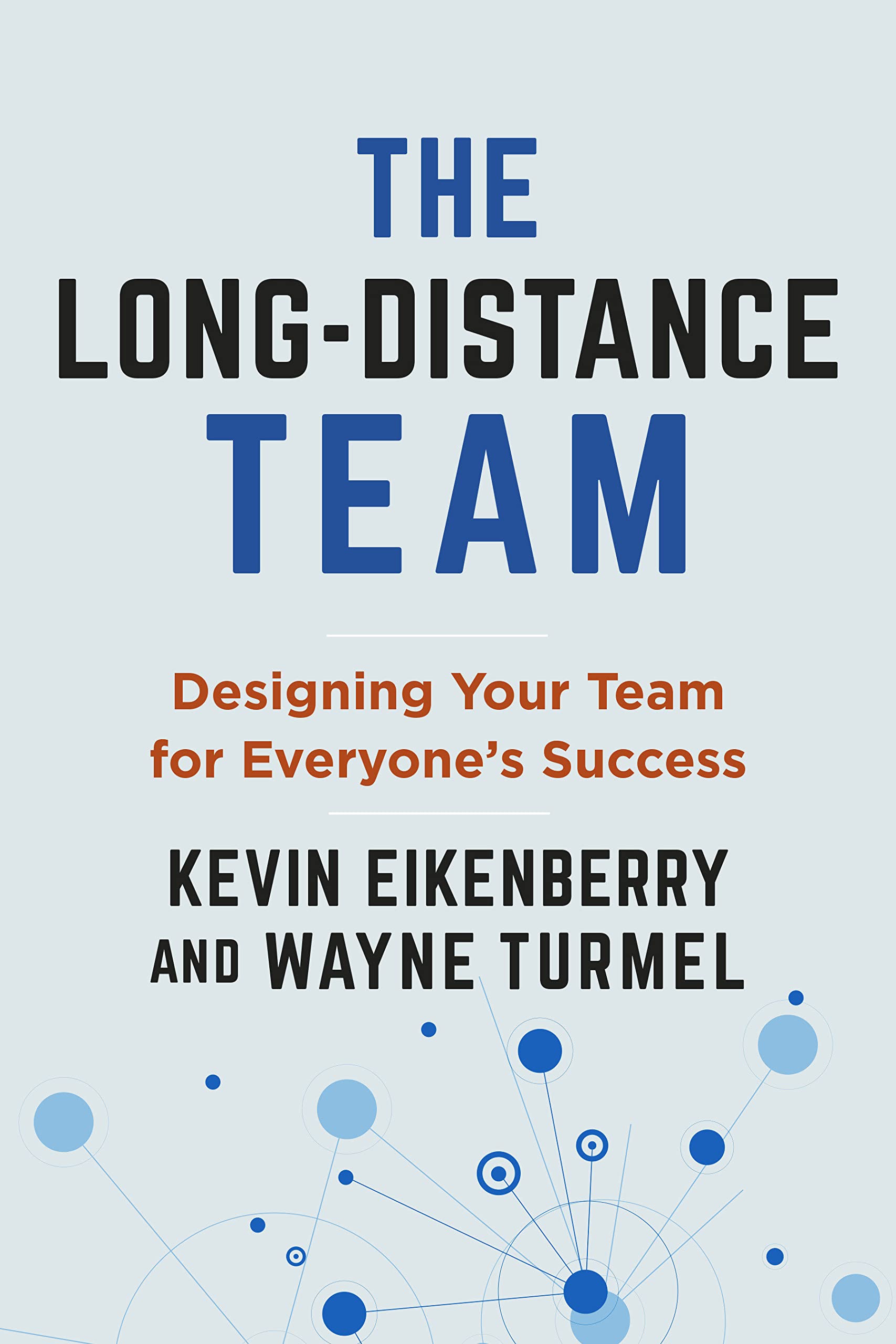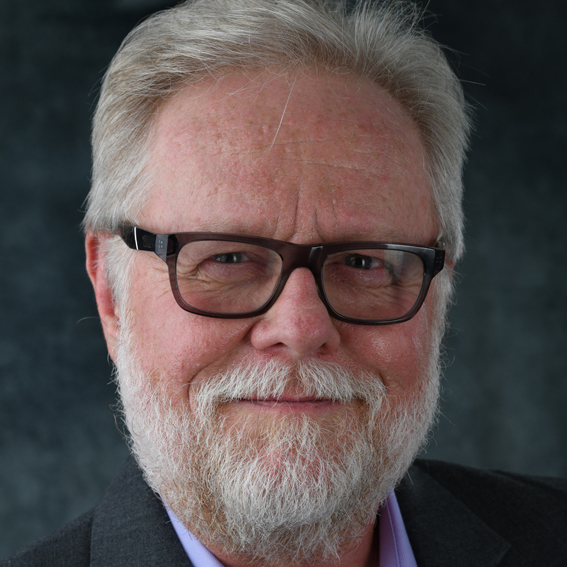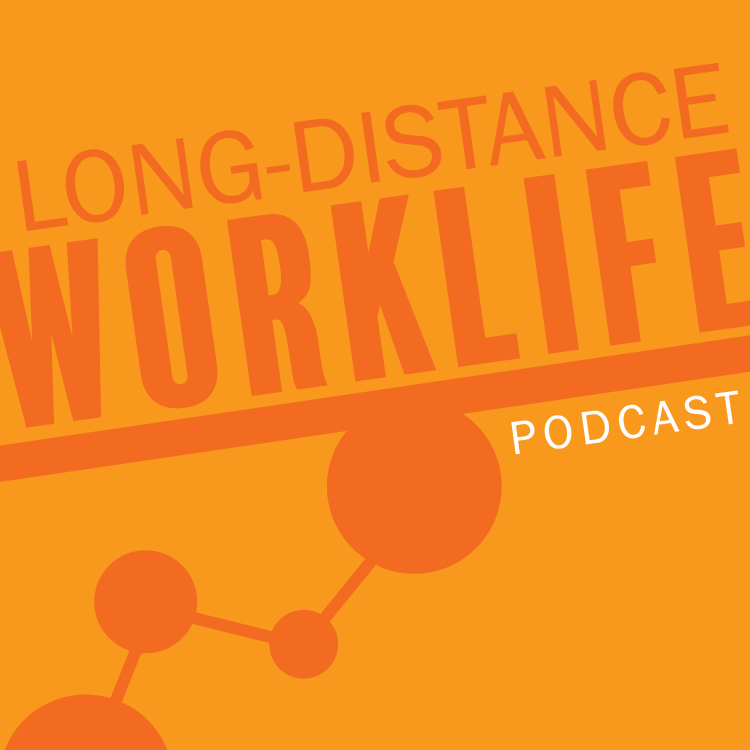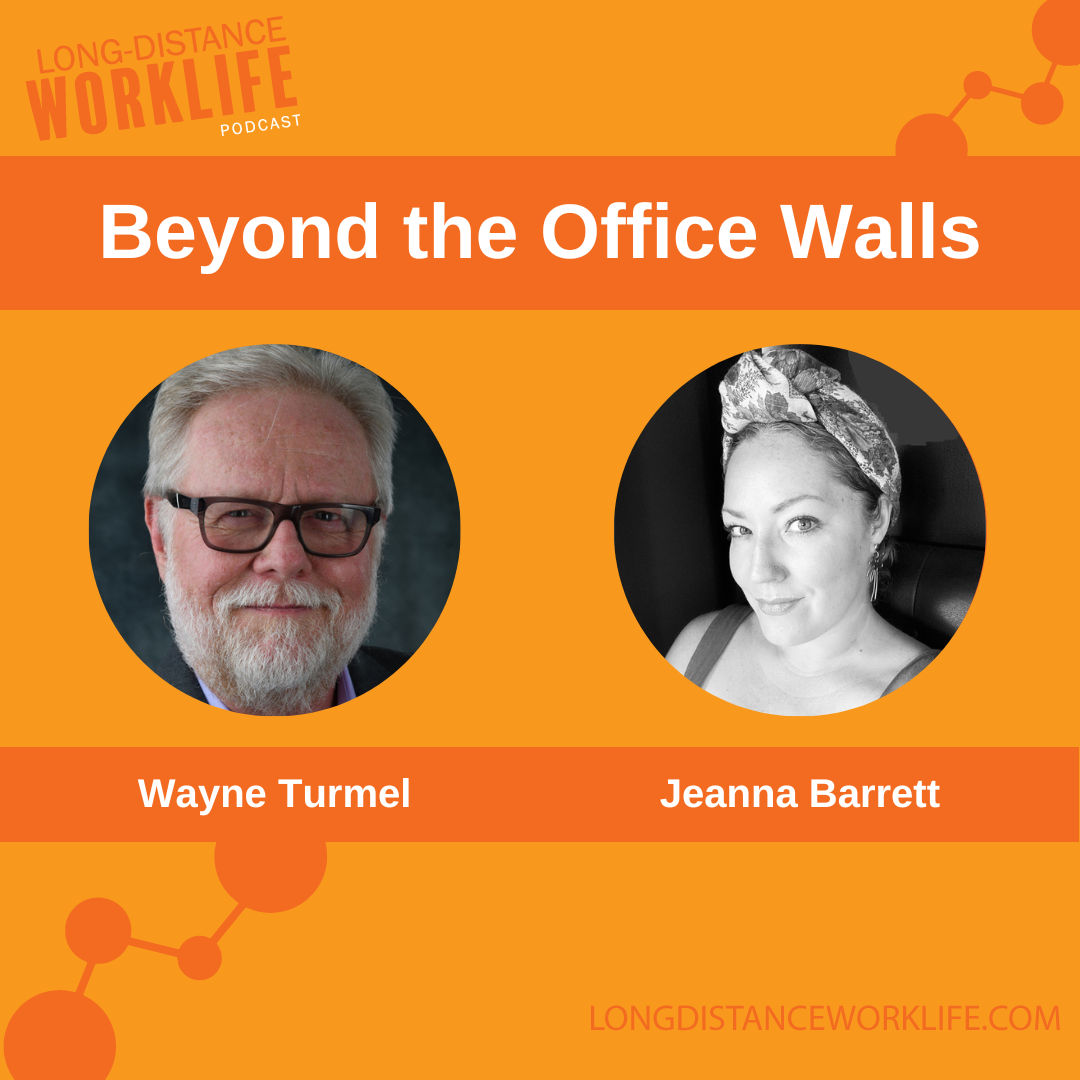Wayne Turmel dives into the intricacies of digital transformation in remote and hybrid work environments. Joined by Jay Goldman from Sensei Labs, co-author of "The Decoded Company," they explore how companies can embrace change, optimize operational excellence, and tackle the challenges of digital adoption. Listen in for an enlightening conversation about leveraging technology, managing change, and enhancing team collaboration in a virtual workspace.
Key Takeaways
1. Embrace a mindset of constant transformation: Understand that digital transformation is not a one-time project but an ongoing process.
2. Develop digital proprioception: Familiarize yourself with new tools and data to navigate digital environments more effectively.
3. Start small with transformation initiatives: Focus on achievable goals within your team before tackling larger-scale transformations.
00;00;07;26 - 00;00;36;19
Wayne Turmel
Hello, everybody. Greetings. Welcome once again to the Long Distance Work Life podcast, where we try to help you thrive, survive, generally make sense, and keep the weasels at bay in this crazy world of remote and hybrid work. My name is Wayne Turmel. I am very excited to be with you. Marisa is not here, alas. But don't go away, because we have a really, really excellent, very smart guest.
00;00;36;19 - 00;00;59;24
Wayne Turmel
And we're going to be talking about digital tram transformation inside companies and what that means and why you care as remote or hybrid worker. And so to do all that I bring into the room, Jay Goldman Jay's with Sensei Labs up in Toronto and he is the coauthor of The Decoded Company. Jay. How are you?
00;00;59;26 - 00;01;01;21
Jay Goldman
I'm great. How are you in?
00;01;01;24 - 00;01;07;26
Wayne Turmel
I I'm not claiming greatness, but I am just dandy. Thank you so much.
00;01;08;03 - 00;01;08;24
Jay Goldman
No weasels.
00;01;08;26 - 00;01;20;02
Wayne Turmel
You know, the weasels are firmly at bay today. So full question for you, man. The decoded company. Let's start there. What the heck are we talking about?
00;01;20;04 - 00;01;45;19
Jay Goldman
Code A company is a book that I wrote with three coauthors. It is almost at its 10th anniversary, which is a pretty amazing thing. It was our attempt to answer some questions both about what we were building at Click Health at the time, which is now in while it was founded in 1997. So, you know, it's quite a mature business at this point and has grown significantly.
00;01;45;19 - 00;02;06;02
Jay Goldman
Ten offices around the world, 1500 plus people, a few hundred million a year in revenue. So it's grown to be a pretty sizable business. And cricket click is really a pretty amazing growth engine. It has, for most of its history, sustained 30 to 40% year over year growth, and that is harder and harder thing to do as the numbers get bigger.
00;02;06;04 - 00;02;24;06
Jay Goldman
And so we would get asked a lot about how were we able to continue to sustain that kind of growth. It's pretty easy when you're a small company. It's much harder as you scale. And so we wanted to tell the story of how we were doing that, using a combination of technology and data to build a talent centric workplace.
00;02;24;08 - 00;02;51;08
Jay Goldman
And so we set out to tell that story. The book was written by myself, Lior Segal and Aaron Goldstein, who are two of clicks co-founders and a friend of mine. Roth Our Fish Roth is a world renowned expert on digital anthropology and on understanding how people use tools. At the time, she was working with the World Economic Forum in Switzerland, understanding the way that organizations were approaching digital tools.
00;02;51;08 - 00;03;02;03
Jay Goldman
And so she joined us to write the book and do a lot of research into companies other than click and how they had similar adventures with data and with talent.
00;03;02;06 - 00;03;33;05
Wayne Turmel
Now, so you I'm I'm going to stop there because you said something that is worth noting and this is where data and process and all this stuff come together. Right? A lot of organizations gather data or think they gather data. A lot of people, myself included, worry less about artificial intelligence and more about natural stupidity because all this data comes in contact with human beings at some point.
00;03;33;05 - 00;03;35;07
Wayne Turmel
And that's where things get messy, right?
00;03;35;09 - 00;04;06;19
Jay Goldman
Absolutely. And in in ways that we're not very good at predicting. And that's part of the problem. So with all kinds of mental biases, we might look at a training set of data and say, this seems like a complete set of data to me, and then train some AI on how to make use of that data and not identify the gaps in the training set that are now going to lead to carrying that same bias forward into the AI, which can have very serious consequences.
00;04;06;22 - 00;04;28;03
Jay Goldman
We are past the point here of AI might not generate the right image and into air, might not make the right funding decision on someone's mortgage application or make the right treatment decision in a health care context. Because the training set of data was incomplete in a way that the people who trained it didn't notice was missing from that data.
00;04;28;05 - 00;04;31;25
Jay Goldman
So we're getting into the potential for some scary situations.
00;04;31;27 - 00;04;57;09
Wayne Turmel
Yeah, and whether it's AI or data, the point is that what is going to make remote work work is people need access to information and they need access to the ability to make decisions and they need to be able to communicate with each other. Having the same baseline reality. And this is where I really want to talk to you about how organizations do this or not.
00;04;57;09 - 00;05;08;08
Wayne Turmel
This idea of digital transformation, taking what's been walking around in people's heads and kind of soaked into the paint of the office and turning it into something usable?
00;05;08;10 - 00;05;34;27
Jay Goldman
Yeah, Digital transformation is an interesting term because before the pandemic it was emerging well, emerging as a term, but in a lot of cases was not transformation. It was more so that I.T. departments and and PMOS had kind of figured out if I had a project that I've been trying to get funding for for a long time and I couldn't get funding for it, if I call it a transformation, I can get funding now.
00;05;35;00 - 00;05;58;24
Jay Goldman
And so that's not really transformative, could be digital. So in some cases that was things like we really need to migrate to a new ERP version and no one will fund this project, but if I call it a transformation, we'll get funding and now we can migrate to the new ERP version. And there's nothing transformative about that. And it was often viewed as sort of one time fixed duration project.
00;05;58;24 - 00;06;20;07
Jay Goldman
So we're going to start our ERP migration or whatever it is. It's going to take us ideally a year, probably two or three years, and then we'll be done. And then our transformation is finished and we take issue with that idea. That transformation is a one time project because you will potentially be transformed on the other side if it's a real transformation.
00;06;20;09 - 00;06;47;08
Jay Goldman
But if that project really does take you three years, everything around you will have changed as well. And so the real goal here ultimately and the term that is starting to emerge more often is operational excellence, which is we are going to go from a state of transformation to a state of constant transformation where we acknowledge that really to to execute operationally at the highest standard of excellence.
00;06;47;10 - 00;07;06;23
Jay Goldman
We have to be in that sort of constant transformation state in a kind of change is the only constant mentality and in a posture of agility that allows us to continuously take in those new market conditions, those new signals, those new other things, and be able to adapt to them and make those changes.
00;07;06;28 - 00;07;33;02
Wayne Turmel
So take me back a little bit. What is it that we're transforming? I mean, we have offices, we have people in them, we have remote employees. They're out there doing stuff. What are we transforming before we get to what we're forming? Do what is it that needs to be transformed in order for this new kind of work to take place and be excellent and all of those things?
00;07;33;06 - 00;07;55;09
Jay Goldman
The word transformation gets thrown around a lot to mean different kinds of programs. So let's first start off with what are we not talking about in this context of sort of work life? So we're not talking about a transformation at a cost transformation level. So this isn't an exercise in reducing cost of production or cost of goods delivered.
00;07;55;12 - 00;08;24;13
Jay Goldman
So we're not talking about sort of the procurement finance transformation piece here, a very valid type of transformation, but less sort of the topic at hand here. We also work with our customers and our partners on lots of transformative programs that are sort of large business processes that have happened, something like a post-merger integration on a M&A transaction is a good example of a very transformative program, but not the kind of transformation that we're talking about here.
00;08;24;16 - 00;08;47;21
Jay Goldman
Digital transformation, maybe this sort of shift. Often it is internal. So if we think about what really happened during the pandemic from a way we work perspective, we created forcing functions that we all collectively had no choice about at all. Everyone had to go home and work from home. And so it forced us to make probably a decade of technology adoption in a six month period.
00;08;47;21 - 00;09;09;22
Jay Goldman
We had no choice. We had to now all work from home and we had to figure out ways to do it. We saw new platforms emerge. We saw new ways of working emerge, and we saw rapid adoption because there was no option, which is kind of a forced digital transformation in a way. So that I would say very much in that sort of long distance work life balance question fits into that scope of that sort of transformation.
00;09;09;23 - 00;09;23;01
Jay Goldman
I had the opportunity to speak at an event about a week ago and we were talking about the four day workweek, which is something that we've adopted at Sun Labs, which is a very interesting topic. It's kind of a separate topic of happy to get into it if you'd like.
00;09;23;08 - 00;09;29;01
Wayne Turmel
But no, not a rabbit hole. We're going to go down a deep, very deep and very full of rabbits.
00;09;29;01 - 00;09;54;24
Jay Goldman
It is very happy rabbits, though, as it turns out. So and no weasels at all. So happy to talk about that at some point. But our our session at this event was about 40 week. But the broader event was all about the changing world of work and hybrid and remote and how we're adapting to those things. And the most consistent message from all of the speakers who were there was we all go to a tool mentality when this topic comes up.
00;09;54;27 - 00;10;19;05
Jay Goldman
So we start thinking about digital transformation. How do we enable our hybrid work teams to connect with each other, to collaborate, share files, video meetings, that kind of thing. And the reality is 80 to 90% of this is a change management question. It's not a tool question. The problem is the change management part is hard. It's the soft, squishy bits that relate to humans and emotion and fear of change.
00;10;19;08 - 00;10;41;04
Jay Goldman
And because it's those parts, we tend towards turning this into a tool conversation because it's much easier to make a tool based decision. Should we deploy teams or use Zoom or should we collaborate on SharePoint or Google Drive or whatever tooling decision we're making in there, Those feel more manageable, easier to assess. There's good vendor reviews out there.
00;10;41;08 - 00;10;58;21
Jay Goldman
You can make up very pragmatic buying decision about those things, but if you don't think about the change management impact when you deploy them, you're going to result in no adoption and a very turbulent time for your team members. Really, 80 to 90% of that effort should be in the change management impact.
00;10;58;24 - 00;11;15;00
Wayne Turmel
As a CEO, I want to run a theory by you right, because you're both in the space and you go to work every day leading your company. I have this theory that once you get past a certain basic set of tools, it really doesn't matter which one you use.
00;11;15;03 - 00;11;16;07
Jay Goldman
Well, I think that you're.
00;11;16;07 - 00;11;27;01
Wayne Turmel
Either going but use it, use it correctly, you know, have the right mindset and use it, or you're not. And if you're not, it doesn't matter which one you have.
00;11;27;03 - 00;12;00;16
Jay Goldman
Right? This has always been true for almost any form of tooling that exists. I think back to this sort of world of productivity. And it's so easy to fall into this trap of if I just figure out the right personal productivity system, I will unlock this state of bliss in which I am eternally productive. And the truth is, you will spend a good third of your time looking at productivity systems or not being productive, because the truth is it doesn't matter.
00;12;00;17 - 00;12;22;12
Jay Goldman
You find the one that works the best for you, whatever that thing is, whether it's GTD or whether it's, you know, some other system. And as long as you stick with the system, you'll get the output from it. It really the tool itself doesn't actually matter. And so that's absolutely true here from how we think about enabling remote work and hybrid work, there is a basic set of tools.
00;12;22;14 - 00;12;43;14
Jay Goldman
Some percentage of your organization will become power users of those tools. The vast majority of the people who work in your organization will not they are just not minded in that direction in terms of figuring out all of the intricate details of how something works and how to get the best value out of it, and they will probably use it wrong.
00;12;43;20 - 00;13;04;13
Jay Goldman
And that's just the reality of deploying tools. We find we're a microsoft based organization, so SharePoint and OneDrive and teams and that kind of thing, and I have yet to have anybody explain to me the difference between SharePoint and OneDrive in a way that makes any actual sense in terms of how I should use these and where I should put the file.
00;13;04;20 - 00;13;19;15
Jay Goldman
How our organization only operates out of our shared SharePoint volumes and the other half only operates out of their OneDrive. So all of the files are stored in their OneDrive and shared from there. No one will ever make this make any amount of sense outside of Microsoft. It doesn't matter.
00;13;19;17 - 00;13;45;01
Wayne Turmel
Now in terms of making sense in your book, in your and in the speaking that you and your coauthors do. I came across a concept that I love because we're talking about digital transformation. And it makes sense that in terms of work, you need information when you need it, you need to know where to get it. You need to be able to create context by it, and everybody has to share the same information.
00;13;45;03 - 00;14;08;25
Wayne Turmel
So all of that makes perfect sense. But you and your team talk about a concept called proprioception, which is from kinesiology. It has to do with our bodies. Can you explain how this fits into that idea? Because I thought this was the singular, coolest, most unique thing about what you guys are talking about.
00;14;08;27 - 00;14;26;24
Jay Goldman
Proprioception is your own sense of where your limbs are in relation to your body. So you don't need to be able to see where your hands are to know where they are. If you close your eyes, you can still reach out and touch your nose. That's proprioception. It's that awareness of where your limbs are in relation to yourself.
00;14;26;27 - 00;14;46;27
Jay Goldman
When we apply it in a digital context, we think of it as a similar level of awareness. Are you aware of the tools around you, the data that's around you, and how it relates back to what you're doing? Is it second nature in the same way as your awareness of your limbs are? Where do I need to go to find this thing and to retrieve it?
00;14;46;29 - 00;15;06;15
Jay Goldman
And that will it relate in many ways to the frequency of the thing that you do? So little kids, babies don't have great proprioception. They're new to this. They haven't spent that much time being aware of where their limbs are. They smack themselves in the face. They can't pick things up. We get that sense developed over time as we learn about those things.
00;15;06;15 - 00;15;29;03
Jay Goldman
And thankfully for humans, it develops fairly quickly because otherwise we would be quite useless much longer into our lives than we are. But if you think about how you learn a new tool, you're you're digital. Proprioception within that tool is pretty novice at the beginning. It all kind of feels like you have one hand tied behind your back, which relates obviously back to that sense of proprioception.
00;15;29;05 - 00;15;51;21
Jay Goldman
It feels like unnatural that you're using this, and depending on the type of person you are, it may remain at that level, especially if you don't have to use the tool that often. So as we deploy more and more digital tools, we create a category of users in those tools who will be perpetual novices. They know interact with the tool often enough to ever become anything close to a power user.
00;15;51;23 - 00;16;08;10
Jay Goldman
If you think about maybe a corporate reporting system, you might go in once a month and have to update a few numbers. Every time you go in there, you'll be at that novice level. Your proprioception is very low. You're learning it again every time you go back in there. So that tool will never really feel natural to you.
00;16;08;17 - 00;16;25;23
Jay Goldman
Someone else might use that tool on a daily basis. Maybe it's a member of the finance team or the PPMO. When they go in there, it feels like second nature to them. They know exactly where everything is. They know where to retrieve that from. And so they're able to go in there and be a power user where you're not able to necessarily do the same.
00;16;25;26 - 00;16;52;21
Jay Goldman
The other thing that's really relevant here is around how we develop an awareness of where things exist in that digital ecosystem. So less about a specific tool that I might go into, more about how do I get a question answered? And so I was just spending some time with one of our customers who is a vice president of transformation in a very large enterprise overseas, in this case, a whole bunch of post-merger integration projects that are coming together.
00;16;52;23 - 00;17;15;20
Jay Goldman
And he has a large team of project managers who report to him. One of the jobs as project managers have to do is on the strategic portfolio management side. So identifying business cases, putting them forward for review is this a project that we want to go ahead with? And writing those business cases is actually a very challenging thing to do because to do it properly and to get to a place where it's not garbage in, garbage out.
00;17;15;26 - 00;17;43;25
Jay Goldman
We had bad business cases, we made bad decisions, we ran that project. You need a fairly high degree of sophistication from a business modeling perspective, and you need a bunch of inputs into that. So this organization has a lot of field technicians. If you're doing a calculation about the cost of running a particular type of program, you might need to know what the hourly loaded cost is of a field technician in different regions in the U.S. in order to put a proper business case for it.
00;17;43;27 - 00;18;02;24
Jay Goldman
So one of the challenges they have is that process just takes too long. The PMS don't have that information for them to go and find. It is a really labor intensive exercise, low proprioception in terms of where that data exists in the organization, which results in shortcuts. So they end up just guessing at a number and plugging it in.
00;18;02;24 - 00;18;34;15
Jay Goldman
You make a bad decision and you can end up costing the organization millions of dollars in this case at the scale that they operate because a project gets greenlit with bad data that was in there or doesn't get greenlit and should have been. But you had the wrong numbers involved in that calculation. I think there's going to be an emerging category of tools here that are going to help with this because it is a thing that I, if you've adjusted it correctly to a low hallucination rate, because obviously you don't want to give people made up answers that are incorrect and are now going to get plugged into these.
00;18;34;18 - 00;18;35;13
Jay Goldman
But if you think about.
00;18;35;13 - 00;18;38;28
Wayne Turmel
The parable, some of us have made a career of that.
00;18;39;01 - 00;19;00;27
Jay Goldman
Sure, sure. But if we're building tools that do this, in our ideal state, we're playing into really the strengths of an AI system. So go out and take in a huge amount of data, far more than any individual person could do, internalize that data and understand the relationships between it and be able to answer questions for someone who can't go digging through all of that data.
00;19;00;29 - 00;19;23;21
Jay Goldman
So if deployed correctly in that way, and I love Microsoft's language of copilot as an assistant here, I should have a personal assistant that I can ask those questions to. They should be able to be questions about anything we do as an organization, and it should be able to either answer it or at least point me in the right direction as to who I could ask or where I can get an answer from.
00;19;23;23 - 00;19;31;02
Jay Goldman
And that to me might end up being one of the highest value categories of AI in an organization, especially in large enterprise.
00;19;31;07 - 00;19;54;10
Wayne Turmel
This is I could geek out about this for a while and we are out of time already, which is terrifying. I'm let me ask you this. If somebody isn't at your level of sophistication, which is 90% of humanity in terms of digital transformation, what are the one or two things that they absolutely have to know before they begin?
00;19;54;12 - 00;20;16;19
Jay Goldman
This is a big scary topic for people because we've turned it into a big, scary topic. But it doesn't have to be. It's the old thing about how do you eat an elephant one bite at a time, right? If you turn your transformation into a capital E enterprise level transformation, you have to create a transformation management office and hire people who are transformation leaders.
00;20;16;21 - 00;20;41;07
Jay Goldman
You can do that if it really is of that scale, but you're turning this into a much more complicated thing than it needs to be. If you are early in a transformation journey and a low level of maturity as an organization. And I would draw a clear distinction here between a traditional PMO who are very good at executing projects and a transformation team because it is really a different mentality and a different way of thinking.
00;20;41;14 - 00;21;08;08
Jay Goldman
We sometimes go back to a quote, which allegedly is an Einstein quote You can't solve today's problems with the same thinking that created them. And we think about transformation in the same way. If we were successful at executing all of the projects we needed to do and our operational excellence was high, we'd have no need for transformation. The fact that you have to run a transformation is in and of itself a failed state in the sense that things have gone wrong.
00;21;08;08 - 00;21;38;26
Jay Goldman
To get to this point, and we now have to correct for the things that have gone wrong by running a process which has to be different by definition than the processes that have come before. But if you're at a low level of maturity in doing that, don't try to do the entire thing in one shot. The best advice I can give is look for small opportunities to develop those transformation muscles by building out a small set of transformation projects that you're going to run that do have a finite time period and a real transformation outcome.
00;21;39;03 - 00;22;06;14
Jay Goldman
But it can be a really small one. You can start within your own team. What would be transformative for us as a team in increasing our operational excellence? Articulate a hypothesis that has a measurable outcome on it, and then run that as a transformation and start to build up that muscle of thinking differently, of running different practices, of measuring how you approach those things differently, and you'll start to level up that total transformation ability across those teams.
00;22;06;17 - 00;22;27;25
Wayne Turmel
Excellent. Thank you so much. I can't thank you enough. Ladies and gentlemen, You heard it. It's there's so much to talk about. And if you're trying to get your head around it, visit the transcript for this show. Long distance work dot com. We will have links to Sensei Labs and Jay's book and Jay and all that good stuff.
00;22;27;25 - 00;22;54;04
Wayne Turmel
Let this be the beginning of your journey into this. If you enjoy the show, if you have enjoyed the podcast, please, you know the drill. Like subscribe. I'm not going to get all YouTube and tell you to smash buttons, but you know the drill. We appreciate it. If you have questions, show ideas, guest ideas, pet peeves that you want us to tackle, reach out to Marisa or myself.
00;22;54;06 - 00;23;24;20
Wayne Turmel
Our emails are there on the screen. Wayne or Marisa at Kevin Eikenberry dot com. Find us on LinkedIn. We are happy to connect. And if you are looking at your team and thinking we need to fix this, a good place to start is Kevin Eikenberry and my new book, The Long Distance Team. You can visit long distance Team BBC.com and begin your journey there.
00;23;24;23 - 00;23;38;08
Wayne Turmel
Thank you so much for joining us, Marisa will be with us next week. And the world said yay. In the meantime, thank you for being with us. Check out past episodes of the show and don't let the weasels get you down.
Featured Guest
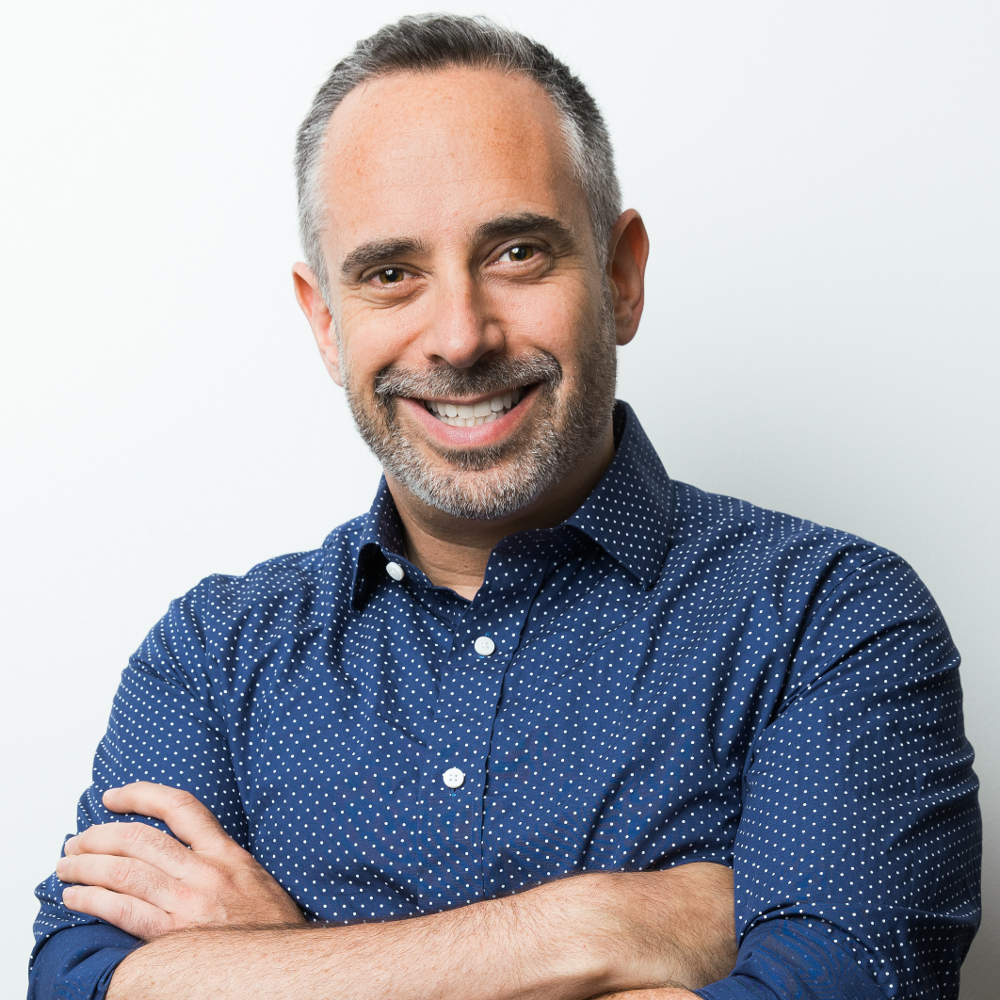
Name: Jay Goldman
About: Co-Founder and CEO of Sensei Labs, co-author of The Decoded Company
Timestamps
00:00 Introduction
01:06 Understanding Digital Transformation
03:02 Data, Process, and Human Impact
04:57 Navigating Digital Transformation
13:45 Proprioception in Digital Contexts
19:31 Practical Approaches to Digital Transformation
22:27 Conclusion
Related Episodes
Additional Resources
Order The Long-Distance Team
Remote leadership experts, Kevin Eikenberry and Wayne Turmel, help leaders navigate the new world of remote and hybrid teams to design the culture they desire for their teams and organizations in their new book!
